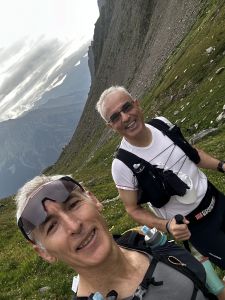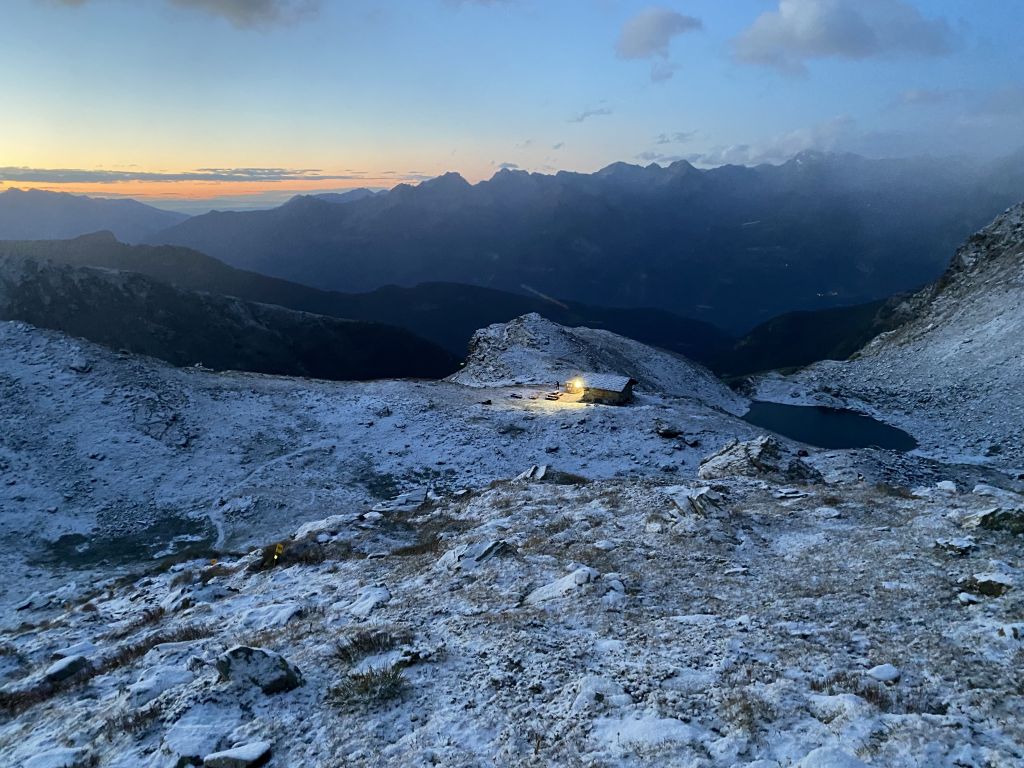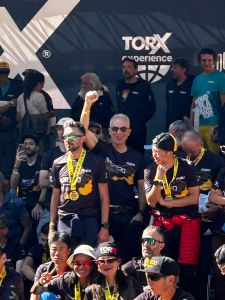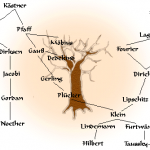
The Lightness of Being A Professor of Physics Running in The Alps
Quantitative Survey
The Ithaca [2] journey of a Man, who decided to perform TOR330, peaked whilst on a week’s-long practice with Tolga UZ[3] of the 250km+16K D+ part of the Strange Valle d’Aosta Loop (330km+27K D+)[4], just twenty days before the race. The TOR330 race began with the start at 12.00 on Sunday 8th September 2024 from Courmayeur at the foot of Mont Blanc, making a tour around the giants, Ruthor, Gran Paradiso, Monte Rosa, and Cervino, respectively, including passages at higher than 3000m altitude. The loop was not merely a nature museum of the Alps. Absolutely not. It was like a museum tour for the most magnificent architectural structures of the planet. Completing the loop and being crowned a finisher took 148.5 hours[5]. Although I completed the Strange Valle d’Aosta Loop run, starting and ending at the same space-time location, Courmayeur, and had become more talented, as with my fellow competitors I could not run away from Strange Loops[6] or fully comprehend mind.
Qualitative Analysis: TRACTACUS
In theory, on the one hand, Feynman’s path integral approach of Quantum Mechanics[7] proposes that objects need not travel from one point to another following a single path, rather there are possible paths which objects can follow, determined by the minimization of the action. Although Quantum Mechanics allows such non-intuitive paths, main contributions emerge from paths close to the classical one, which shows Feynman’s approach is a tool between quantum and classical worlds. On the other hand, with Einstein’s theory of general relativity[8], objects follow possible paths: geodesics in curved space-time which dictate the worldline of the objects. Therefore, in both quantum and classical worlds, objects do not move straight forward, there are always non-zero possibilities for the final destination of the objects. Although they are all theoretical, and valid for single objects, these scientific perspectives translate profoundly to human life.
In real life, we are composite classical objects embodied in quantum molecular machines, communicating our perception, cognition, and emotions with the universe aided by our sensors. In other words, one needs to attribute and experience an inner structure to such abstract objects. We are all dressed quantum-based classical objects carried by a virtual cloud of discrete emotions that follows us as we propagate our paths.
How someone decides to run a challenging 330km ultra race by deviating from their classical life path depends on intellectual, hedonic, and cognitive utilities, driven in turn by emotion, cognition and action-seeking motives, as well as somatic ones. It requires free will. Hedonic consumption is directly related with the depth and width of emotive aspects gained through lifetime experience.
In conclusion, what I deduce firstly from the comparison of my desires with that of reasons of my existence is that the path my free will chooses is, in fact, a collection of so many different perturbed and then collapsed paths. It is a bundle, rather than a single path, leading to the conclusion that our reality is the result of combining all possible realities and all paths into a single convergence. Secondly, by these motives, the residential and uninvited music playing in my mind moves, while running in mountains, from backstage to center stage, and brings me to perform my best play. The motto is “Quaerendo invenietis”.
(Submitted 13 December 2024; revised 21 December 2024 by O. Pedgley; published 21 December 2024)
[1] https://id.metu.edu.tr/en/prof-dr-owain-pedgley
[2] C. P. Cavafy https://www.poetryfoundation.org/poems/51296/ithaka-56d22eef917ec
[3] http://uztolga.blogspot.com/
[4] https://www.torxtrail.com/en/content/tor-des-g%C3%A9ants%C2%AE
[5] https://itra.run/api/RunnerSpace/GetRunnerSpace?memberString=eM3Ta5CXGpnEv810x70fUA%3D%3D
[6] Hofstader, Douglas R. Gödel, Escher, Bach: an eternal golden braid. Basic books, 1999
[7] Kandemir BS Lecture Notes on Advanced Quantum Mechanics https://cmt.ankara.edu.tr/15472-2/
[8] Thorne Kip S., Charles W. Misner, and John Archibald Wheeler. Gravitation. San Francisco: Freeman, 2000.

Col d’Arp

Sunrise around Monte Faroma (3072m)

Courmayeur




